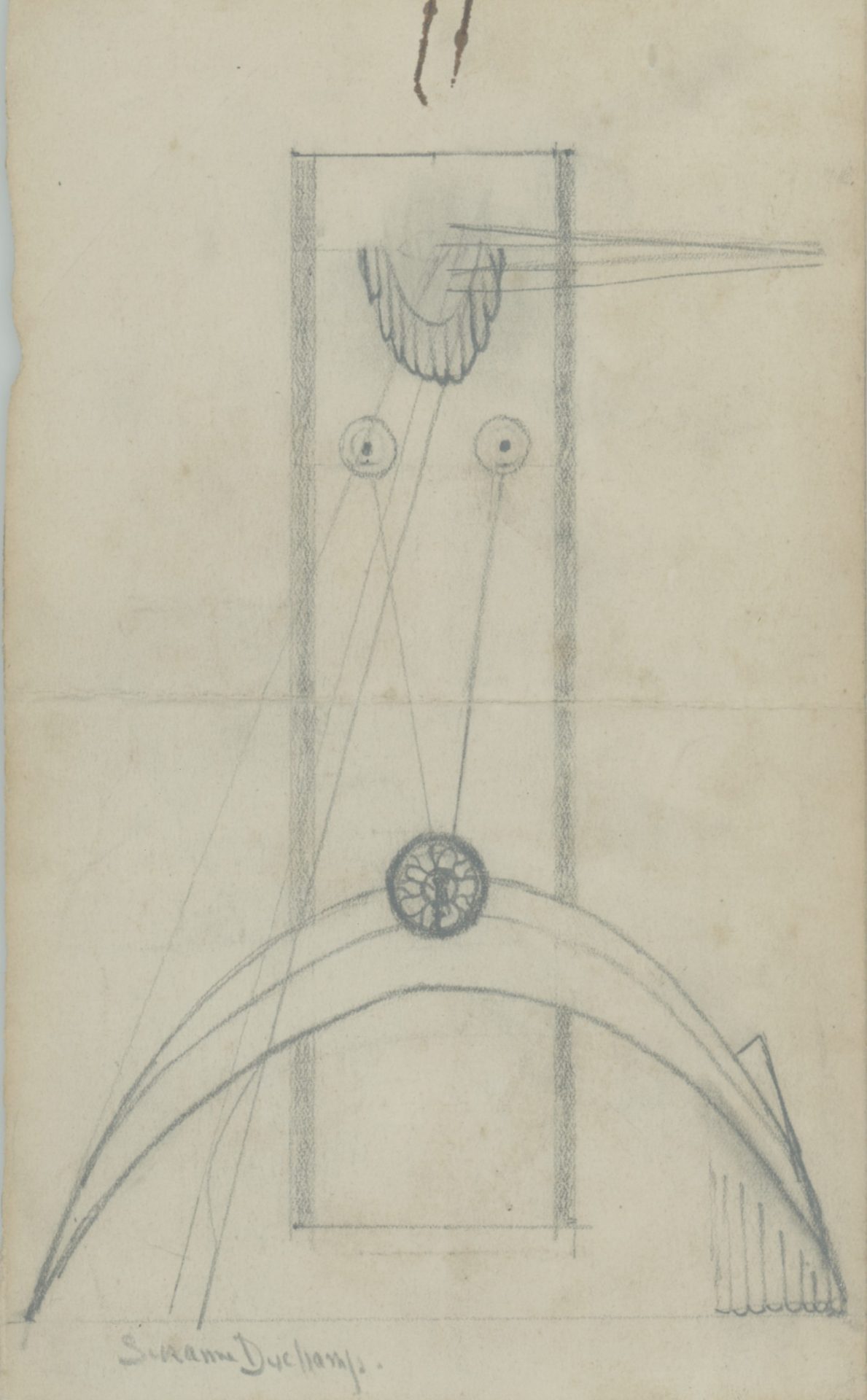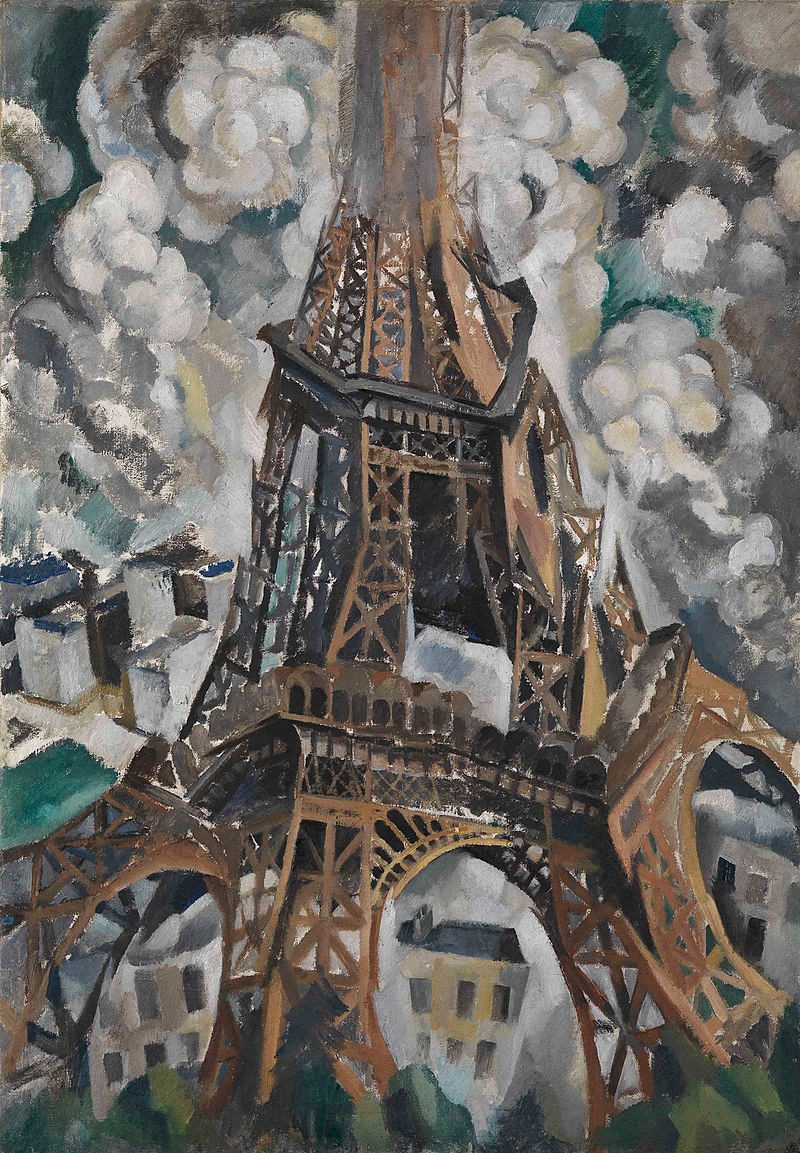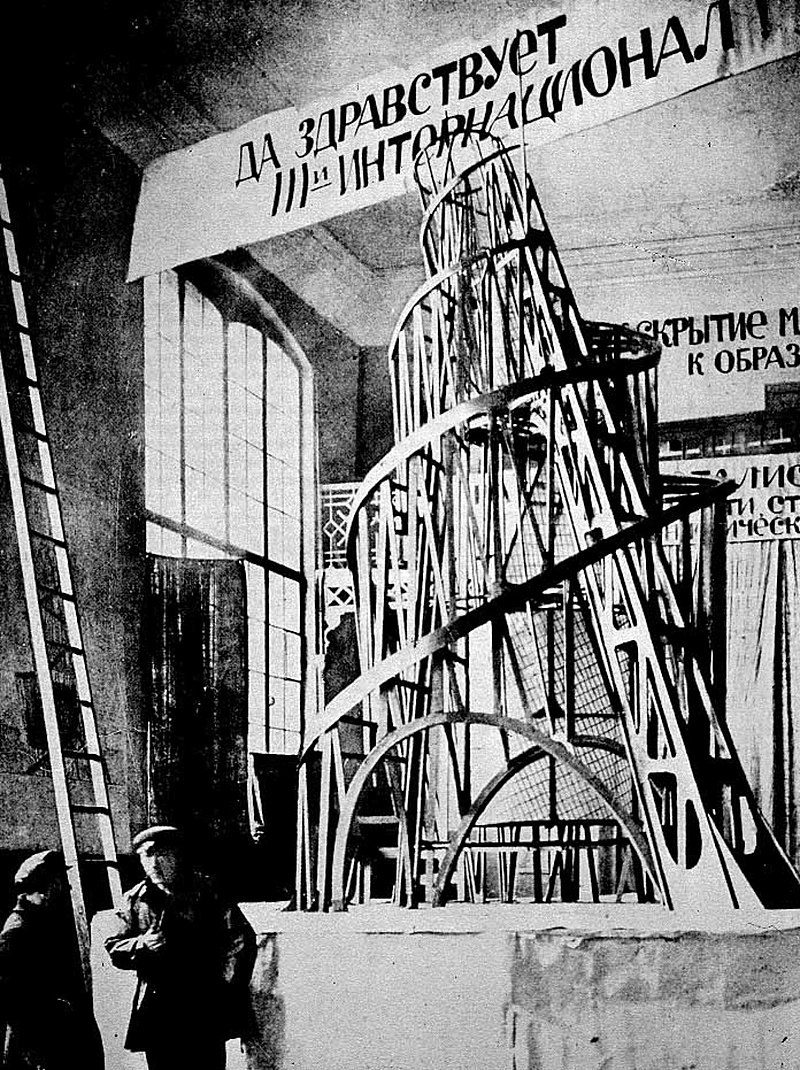THE DIGITORIAL® TO THE EXHIBITION
RETROSPECTIVE
CHAPTER 1

By means of painted words, collaged materials, and symbols, Suzanne Duchamp devises a painting which is also simultaneously a poem. The words arranged in vertical wavy lines can be translated as follows: «And the mirror would shatter / the scaffolding would collapse / the balloons would fly away / the stars would be extinguished / etc…» The French words contain ambiguities which are difficult to convey in translation. They refer to the forms of this unusual cityscape, of which the Eiffel Tower is the central element.
Between 1909 and 1911, Robert Delaunay painted a number of variations on the Eiffel Tower. The tallest building in the world at the time, it was the epitome of technical progress and the dynamic face of the big city—central topics of the avant-garde. Delaunay deconstructs the tower into facets and progressively dismantles it; the multi-perspectivity and the color palette reveal the influence of Cubism, which was very much in vogue at the time.


The «Monument of the Third Internationale», originally a monument for the (Russian) Revolution, was to be realized as a 400-meter-high tower after the designs by the Russian artist Vladimir Tatlin. A model was created in 1920. Although it was never implemented, the architectural design is regarded as a key work of the Soviet avant-garde and also caused a stir in European art circles.
-
Suzanne Duchamp, Usine de mes pensées, 1920
-
Suzanne Duchamp, Fabrique de joie, 1920
-
Jean Crotti, Laboratoire d’idées, 1921